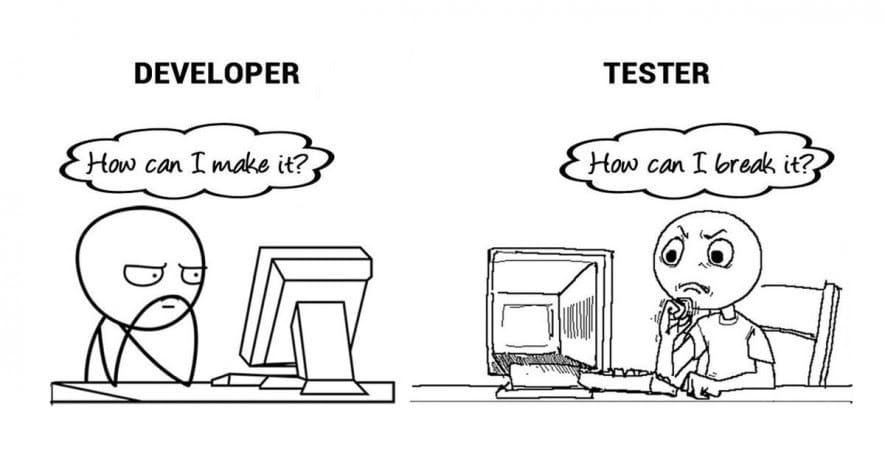In a previous post I gave an overview of the CakePHP Migrations plugin, what it does and why you should use it in your applications. This article will explain how to use it in a practical way. We are going to bake a simple blog application recipe application and see how migrations are integrated in the development process.
Since we recently moved all our open source projects on http://cakedc.github.com/, this sample application source code is also available there: Sample Migrations Application - Github (it is a CakePHP 1.3 application). Ready?
Bake a new application and add the migrations plugin
First of all, we need to bake a new CakePHP application. Easy enough to do using cake bake, then configure your database (an empty database is sufficient for now) and check that the home page is all green! If you have not set up your environment to use the CakePHP command line yet, take some time to do so... it worth it!
Adding the migrations plugin might also be a straightforward task. You can either download the archive containing the plugin code and unzip it in the "/plugins/migrations" folder of your application, or add it as a git submodule with the following command:
git submodule add git://github.com/CakeDC/Migrations.git plugins/migrations
Then check that it is correctly installed by executing the following command from your application root:
cake migration help
If you see a list of available commands you can move on next step.
Create initial tables and bake the MVC
We now need something to migrate! Let's create some tables in the database. The application will have Users who can publish Recipes, each one having several Ingredients (of course Ingredients can be used in many Recipes). Here is a SQL dump of this simple database schema:
CREATE TABLE `ingredients` ( `id` int(11) NOT NULL AUTO_INCREMENT, `name` varchar(100) NOT NULL, PRIMARY KEY (`id`) ) ENGINE=MyISAM DEFAULT CHARSET=latin1; CREATE TABLE `ingredients_recipes` ( `id` int(11) NOT NULL AUTO_INCREMENT, `ingredient_id` int(11) NOT NULL, `recipe_id` int(11) NOT NULL, PRIMARY KEY (`id`) ) ENGINE=MyISAM DEFAULT CHARSET=latin1; CREATE TABLE `recipes` ( `id` int(11) NOT NULL AUTO_INCREMENT, `user_id` int(11) NOT NULL, `name` varchar(100) NOT NULL, `content` text NOT NULL, `created` datetime NOT NULL, `modified` datetime NOT NULL, PRIMARY KEY (`id`) ) ENGINE=MyISAM DEFAULT CHARSET=latin1; CREATE TABLE `users` ( `id` int(11) NOT NULL AUTO_INCREMENT, `name` varchar(100) NOT NULL, `password` varchar(255) NOT NULL, `created` datetime NOT NULL, `modified` datetime NOT NULL, PRIMARY KEY (`id`) ) ENGINE=MyISAM DEFAULT CHARSET=latin1;
As our goal here is not to focus on the application code itself, baked MVC from these tables might be sufficient... just run the command cake bake all for User, Recipe and Ingredient to bake'em all!
At this point we must have an application with an initial architecture ready to share. To start from here, one will just have to checkout the related commit... but don't you see a problem with this? How will he create the initial database? Maybe we could send him the SQL dump by email, or better commit it with the application! It is where the Migrations plugin comes in.
Generate the initial migration
"Be kind with your coworkers and include the database schema with your code... along with some sample data."
Let's use the migrations shell to generate an agnostic database schema containing our 4 tables, and an initial admin user account. To do so we just need to run the following command:
cake migration generate
After entering a name for the migration and selected the database dump option, we might have a new "/config/migrations" directory containing two files:
- map.php representing the different migrations order,
- name_of_the_migration.php a migration file containing all the necessary information to create your actual database. In the sample application it is named: "001_added_users_recipes_and_ingredients_tables.php". You might have noticed that we added a 001 prefix to the migration name to make it easier to see migrations order, it is a good practice.
We can now open the generated migration file (/config/migrations/001_added_users_recipes_and_ingredients_tables.php) and take a look at it. If you need more information and understand all available migration directives, you can read the plugin documentation.
For now we are just going to focus on the empty "after()" callback. This callback is triggered once the migration has been executed, and allow you to do whatever you want, given the direction of the migration: applied (up) or reverted (down). We are going to use this callback to create an initial admin User. Here is the code of the callback (as you are a CakePHP developer you might understand it quite easily):
function after($direction) {
if ($direction === 'up') {
if (!class_exists('Security')) {
App::import('Core', 'Security');
}
$User = $this->generateModel('User');
$user = array(
'User' => array(
'name' => 'admin',
'password' => Security::hash('unsecurepassword', null, true)));
$User->save($user);
}
return true;
}
Notice the use of the generateModel() method provided by the Migrations plugin. It is a shorthand allowing you to cleanly load a model in the callback to insert new data or update the existing. We could explain the reason of it more deeply but it is not the goal of this article, so just keep in mind that it is the best way to load a Model from callbacks!
Here we are! We can now share the application with anyone. After checked out the application, one will just have to run cake migration all to turn an empty database to a database containing all the needed tables, and an initial admin user to start using the application.
Categorize the recipes!
As the application evolves, we need to sort recipes by categories. This change involves two changes in the current database schema: a new categories table must be created, and a category_id field added to the recipes table.
Note: If you later want to use the migrations diff feature to generate a migration containing a diff between your previous database schema and the current one, you have to generate a Cake Schema of your database at this point. Simply run cake schema generate.
We can now update the recipes table and create a new categories table. Here is a simple SQL script:
CREATE TABLE `categories` ( `id` int(11) NOT NULL AUTO_INCREMENT, `name` varchar(100) NOT NULL, PRIMARY KEY (`id`) ) ENGINE=MyISAM DEFAULT CHARSET=latin1;
ALTER TABLE `recipes` ADD `category_id` INT NOT NULL
Bake the MVC for categories and update recipes view pages to display the category so the application reflect these database changes. Before sharing these code changes, we need to generate a second migration describing the above SQL snippet in an agnostic way... and creating initial categories!
Nothing different than what we did previously: run cake migration generate, give a name to the migration, and choose between generating a diff from the schema.php file (if one was generated), generating a dump of the database (we will remove unnecessary instructions later) or generating an empty migration file. Once generated, it is always important to check the generated directives for the migration and fix them if needed. The migration must look like this:
var $migration = array(
'up' => array(
'create_table' => array(
'categories' => array(
'id' => array('type' => 'integer', 'null' => false, 'default' => NULL, 'key' => 'primary'),
'name' => array('type' => 'string', 'null' => false, 'default' => NULL, 'length' => 100),
'indexes' => array(
'PRIMARY' => array('column' => 'id', 'unique' => 1),
),
'tableParameters' => array('charset' => 'latin1', 'collate' => 'latin1_swedish_ci', 'engine' => 'MyISAM'),
),
),
'create_field' => array(
'recipes' => array(
'category_id' => array('type' => 'integer', 'null' => false, 'default' => NULL)
),
),
),
'down' => array(
'drop_table' => array(
'categories'
),
'drop_field' => array(
'recipes' => array(
'category_id'
),
),
),
);
If you understood what we did in the first migration callback to add an initial user you might be able to implement this one. We would like to add initial categories: Starters, Main Dish and Desserts.
For lazy people, the code is here:
function after($direction) {
if ($direction === 'up') {
$Category = $this->generateModel('Category');
$categories = array(
array('name' => 'Starters'),
array('name' => 'Main Dish'),
array('name' => 'Desserts'));
$Category->saveAll($categories);
}
return true;
}
Here we are again! The changes are ready to commit, and the commit will contains both code and database changes. One could update the database after checking out this commit by running: cake migration all.
The end
I hope this very simple use case and the code we built will help you to start using Migrations. As you could see it is very simple to use and will make your life much more easier: you would not have to worry anymore about the state of your database schema.
The source code of this tutorial is available on Github. If you found any bug or have any suggestion about the Migrations plugin, please create a ticket on Github. Comment this article if you have any question, and do not hesitate to share it if you found it useful!
 BUT...
BUT...
 It is not like we want to detroy what you have created but...
It is not like we want to detroy what you have created but...
 And we have to report it, it is our job...
And we have to report it, it is our job...
 It is not like we think
It is not like we think
 I mean
I mean


 I know you think
I know you think
 But remmember we are here to help xD
But remmember we are here to help xD
 Happy Holidays to ya'll folks!
Happy Holidays to ya'll folks!


